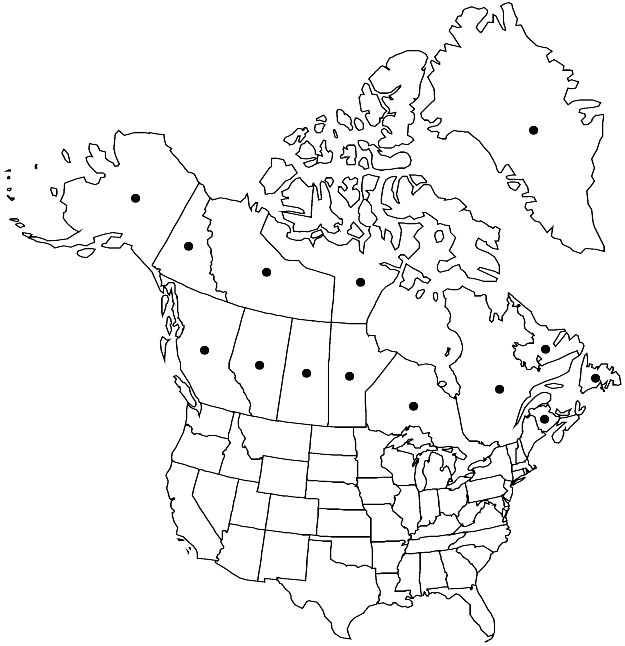Hypnum recurvatum
Enum. Bryin. Exot., suppl. 2: 100. 1893.
Plants small, yellowish to light green, blackish brown proximally. Stems 2–5 cm, light yellow to yellowish brown, creeping, irregularly to regularly 1–2(–3)-pinnate, densely to loosely (sometimes fastigiately) branched, branches 0.2–0.5(–0.8) cm; hyalodermis absent, central strand weak; pseudoparaphyllia narrowly lanceolate to filamentous, rarely branched. Stem leaves strongly falcate-secund to circinate, ovate to oblong-lanceolate, gradually narrowed to apex, 0.7–1.3 × 0.3–0.4 mm; base somewhat decurrent, subcordate, not auriculate; margins recurved basally to 2/3 leaf length or longer, occasionally plane, almost entire to finely serrulate; acumen fine; costa indistinct, weak, or ecostate; alar cells quadrate, region not well defined, 4–10 cells in marginal row; basal laminal cells broader than medial cells, yellowish, walls ± porose; medial cells 30–50+ × 3 µm. Branch leaves similar, 0.5–1 mm. Sexual condition autoicous. Seta reddish when mature, 0.7–1.5(–1.8) cm. Capsule suberect to horizontal, yellowish to reddish when mature, oblong to subcylindric, 1–2 × 0.4–0.8 mm; annulus 2-seriate; operculum conic; endostome cilia (1–)2–3.
Phenology: Capsules mature late summer–fall.
Habitat: Obligate calcicole, on relatively plane surfaces of cliffs and boulders, particularly where humidity is persistent
Elevation: low to high elevations (0-2000 m)
Distribution

Greenland, Alta., B.C., Man., N.B., Nfld. and Labr., N.W.T., Nunavut, Ont., Que., Sask., Yukon, Alaska, Europe, Asia.
Discussion
Hypnum recurvatum is widespread in the Northern Hemisphere, more frequent in western than eastern portions of the continents. The plants are firmly affixed to the substrate by rhizoids and produce sporophytes in summer; the branches are unequal in length and sometimes flagelliform; the pseudoparaphyllia are frequent, possibly referable to paraphyllia, usually with a 1-seriate apex 3–6 cells in length; the stem leaves are plicate; and the alar cell walls are thinner than those of the medial cells. This species has been confused with H. revolutum var. ravaudii, but the pseudoparaphyllia of that variety are wide and foliose, while those in H. recurvatum are lanceolate to filamentous. The leaves of H. recurvatum are strongly falcate to circinate, while those of H. revolutum var. ravaudii are often barely falcate and sometimes straight; also alar cell differentiation in H. recurvatum is less pronounced than in the other. Hypnum fastigiatum Bridel is an illegitimate later homonym that pertains here.
Selected References
None.